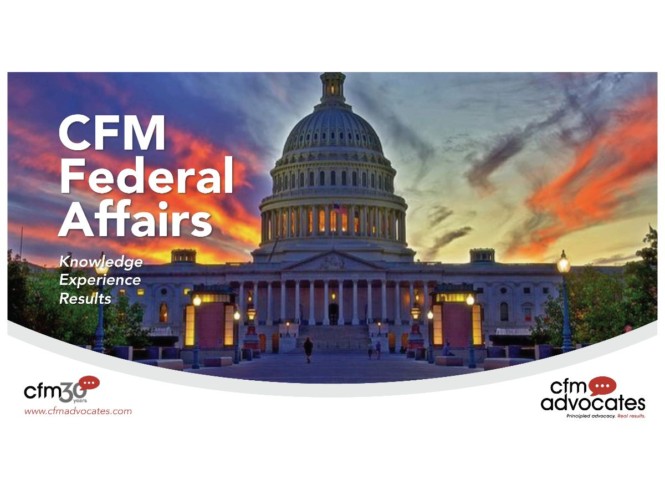
Latinos Represent a Younger, Fast-Growing Voting Cohort
White college-educated suburban voters were the swing group that helped elect Joe Biden as President in 2020. The swing group in the 2022 elections may be voters who identify as Latino.
A new Washington Post-Ipsos poll indicates Latino registered voters will favor Democrats in the 2022 congressional midterm elections, but by a smaller margin than the 40 percent difference in 2018. The 63 to 36 percent difference between Democrats over Republicans is comparable to voting in 2020. A Post-ABC poll in September predicted a much tighter split with Republicans topping Democrats by 47 to 46 percent.
Latinos are the fastest-growing racial and ethnic group in the US electorate, according to Pew Research, with an estimated 34.5 million voters eligible to cast ballots in this year’s midterm elections. As a result, Latinos have emerged as the swing group Republicans and Democrats are courting to win close congressional and state contests. Races for Oregon governor, Oregon’s Fifth and Sixth Congressional Districts and Washington’s Third and Fourth Congressional Districts could ride on how Latinos vote.
Data indicates there are 4.7 million more Latino registered voters than in 2018, accounting for 14.3 percent of the total US electorate. In 2020, Pew Research reported 7.7 percent of both Oregon’s and Washington’s electorates identified as Latino. Latinos account for 32 percent of all eligible voters in California and Texas.
UnidosUS.org provides insight into Latinos in Oregon that influence how they may vote:
- More than 60 percent of Oregon’s Latino population are native-born citizens and 8 percent are naturalized citizens.
- “Although Latinos have the highest labor participation rate of any demographic group, they are overrepresented in several high-growth occupations that tend to pay below-median wages.“
- Latinos are vulnerable to economic downturns and experience high poverty rates, especially among working families with children.”
- Latinos have a lower percentage of employer-provided health insurance and a higher percentage covered by the Oregon Health Plan, the state’s Medicaid program.
- Latino homeownership is lower than the average for the overall population.
While these characteristics tend to put Latinos in the Democratic camp, Donald Trump and other Republican candidates made inroads in attracting Latino votes based on economic issues. Trump enlarged his Latino vote in 2020 by appealing to Latinos without college degrees, which corresponded to his overall electoral appeal to white non-college graduates. In a year with high inflation following an economically disruptive pandemic, Republicans see an opportunity to attract a higher percentage of Latino votes, perhaps enough to swing election victories in tight races.
Oregon’s gubernatorial contest has boiled down to a two-woman race between Republican Christine Drazan and Democrat Tina Kotek, which political pollsters and pundits call a toss-up. The Sixth District race between Democrat Andrea Salinas and Republican Mike Erickson and the Fifth District race between Republican Lori Chavez-DeReemer and Jamie McLeod-Skinner are also tightly contested. Both congressional districts include significant Latino populations, as well as two candidates with Latino names. Salinas is the daughter of a Mexican immigrant and expresses pride in her Latino culture. If elected, she would be the first Latina Oregon has sent to Congress. Chavez-DeReemer lists her nationality as American.

Marie Perez (left) and Andrea Salinas {right) are two Latinos running for Congress in the Pacific Northwest.
Congressman Dan Newhouse, one of only two Republicans who voted to impeach former President Trump to survive primary challenges, is seeking re-election in Washington’s Fourth District, which has an electorate in which 40 percent of voters identify as Hispanic. Newhouse faces Democrat Doug White in the general election after both won slightly more than 25 percent of the top-two primary election. Washington’s Third District features a race between Republican Joe Kent and Democrat Marie Perez, whose father was a Mexican immigrant. Kent defeated incumbent Jamie Herrera Beutler, whose father was of Mexican descent.
“There’s no such thing as the Latino Vote.”
In comments to KUOW, Geraldo Cadava, a professor of history and Latina and Latino studies at Northwestern University who studies Hispanic and Latino Republicans, insists there’s no such thing as the “Latino Vote,” only Latino voters.
“Sixty million Americans is not a bloc. Sixty million Americans have never pushed in the exact same direction,” he says. “Over the past 50 years, between a quarter and a third of Latinos have voted for Republicans, sometimes a little less, sometimes a little more.” To the extent Republicans are making inroads, Caldava says it is because Latino voters in rural areas tend to reflect the conservatism of all rural voters. “Republican Latino voters are a lot like Trump voters elsewhere.”
Polling suggests Latinos are as divided on major issues much like other voting cohorts. One poll shows most Latinos believe that abortion should be legal, while Latino men cited economic worries as a top issue in the upcoming election. The KUOW report cited Seattle-based L2 Data mapping to indicate 10 percent of Oregon Latino voters lean Republican, 33 percent Democratic and 52 percent nonpartisan.
UCLA professor Matt Martinez, who previously lived in Washington and conducts polling for Democrats, says the most interesting aspect about Latino voters is that represent America’s youngest demographic. “What political parties need to do is connect the dots for these younger voters so by the time they become 50-year-old voters, they’re really used to voting Democratic or Republican,” Martinez says. “Right now, Democrats have the bigger opportunity to connect the dots for Latinos.”
Latinos is used as a description that covers people from a Spanish culture regardless of race, including Mexico, Puerto Rico, Cuba, South America and Central America.




